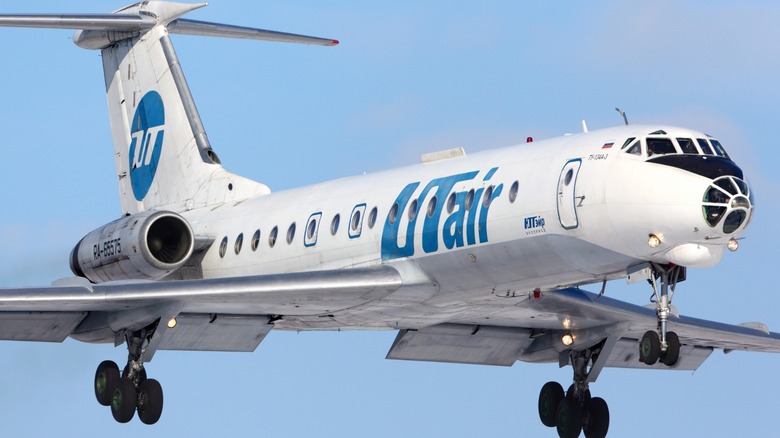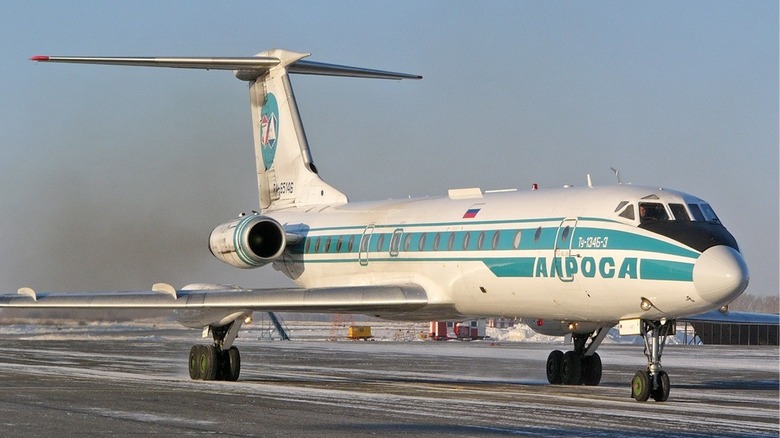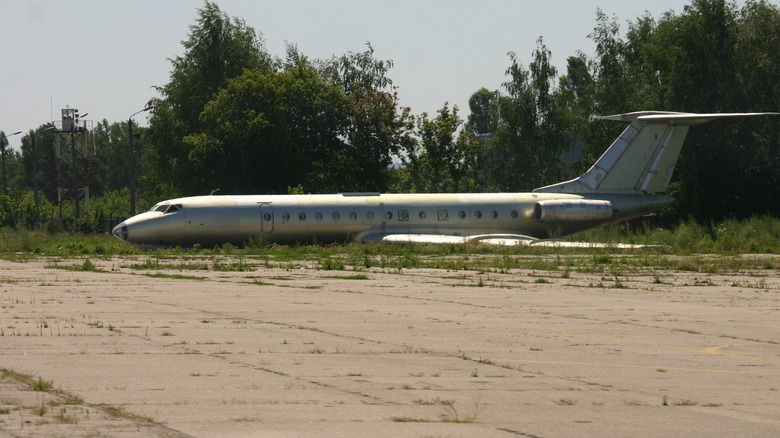Everything To Know About The Tupolev Tu-134 Jet
Much like in the evolution of living creatures, the evolution of vehicles is a divergent process. Once everyone understands the basic idea behind what makes a particular type of vehicle work, the various nations and engineers of the world attempt to put their own little spin on it, iterating further on what's already successful and taking the occasional Hail Mary on a new, untested concept. In some cases, you may accidentally stumble onto the new standard for travel.
In other cases, you get unusual experiments that, while not quite standout enough to redefine a mechanical paradigm, make for an interesting chapter in the greater history of engineering. One such example of these experimental pursuits was the Tupolev Tu-134, a commercial jet designed and utilized within the former Soviet Union. While the Tu-134 never became a global standard, it was one of the flag-bearers for Russia's air travel industry for a long time and an interesting experiment in aeronautic design.
Tupolev Tu-134 development and specs
The Tu-134 was designed in the 1960s by Tupolev, the same Russian aerospace company responsible for the supersonic passenger jet Tu-144. The creation of this plane was ordered by the Soviet leader at the time, Nikita Khrushchev, who was impressed after taking a trip on a Caravelle, a plane created by French aeronautics company Sud Aviation. The highlight was the rear-mounted jet turbines, which reduced the noise level for those in the cabin. The Tu-134 was made a bit more distinctive from its rear-engine contemporaries thanks to its exceptionally large T-tail, which helped keep the rear stabilizer clear of engine exhaust.
The Tu-134 began commercial rollout in 1967, taking its first international flight from Moscow to Stockholm under the banner of Soviet air carrier Aeroflot. It was the very first Soviet airliner to receive international certification, which also earned it the NATO reporting name of "Crusty."
The original version of the Tu-134 could seat 72 passengers in a single class, operating at a maximum takeoff weight of 98,105 pounds and cruising at a maximum of 900km/h. Later versions of the Tu-134, including the Tu-134A and Tu-134B, would increase the vehicle's maximum weight, allowing them to seat up to 84 and 96 passengers, respectively.
Problems and retirement
For much of its lifespan, Tu-134s would land regularly at European airports, coming and going from the Soviet Union, even past the Soviet Union's dissolution in 1991 and into the early 2000s. However, in 2002, following changes in noise level regulations at European airports, the Tu-134 was banned from landing. While the rear-mounted engines did make things quieter for the cabin, outside of the cabin, they produced quite a racket.
Even without EU support, Aeroflot continued to fly the Tu-134 until a fatal crash in 2007, which prompted the company to retire its international Tu-134 fleet the following year. The plane remained in use on domestic Russian flights until another crash in 2011, which prompted then-Russian president Dmitry Medvedev to order the complete retirement of the model.
This end-of-service for the Tu-134 was mostly completed by 2012, though around 30 remained in usage with smaller airlines, with one final Tu-134 flight taking place in Russia in 2019. Though the Tu-134 was not one of the most iconic airplanes in history, it did possess some unique features, making it worth remembering.


